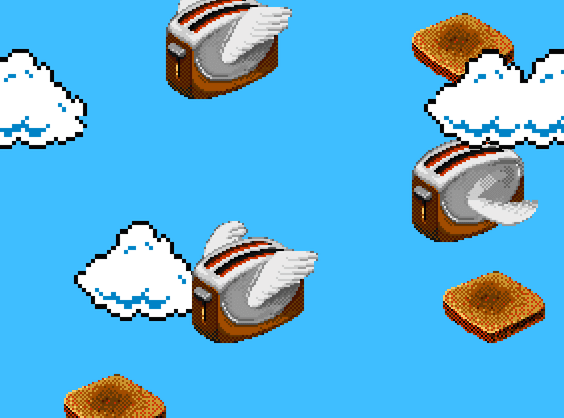
The remark I remember most from my undergraduate thesis critique came from a fellow student. A film major, I think.
“I’d like to have this as a screensaver!”
She meant it as a compliment, but at the time I took offense. I thought the screensaver was the epitome of digital banality.
But in the last few years, I’ve come around a bit.
I think the late 80s / early 90s era screensavers now read as a refreshing double-negation of the recent 8 bit / animated gif fixation. (Although I’m not sure if there’s a way to revisit / reconsider the After Dark heyday without collapsing in a pile of insincerity.)
I can’t think of a course or context at ITP where calling something out as screensaver-esque would go over particularly well (although opportunities abound). The more general new media community seems divided on the aesthetic / contextual parallels between screen-based art and screensavers.
Some forsake the association, others mine the medium for nostalgic kitsch, and a few embrace the idea and use the screensaver as a means of distributing their work. I expected most to fall into the first category, but some Googling around on the topic suggests that NMSAS (New Media Screensaver Anxiety Syndrome) doesn’t run as deep as I initially expected.
Nevertheless, some choice quotes emerged from the sift. Sources are linked, and if anyone wants to comment / update their opinion — some of the quotes are years old — I’m game for a conversation.
Let’s open the floor with three quotes from Marius Watz:
“The curse of generative art: ‘So you make screensavers?’” – Marius Watz
“To the frustration of many digital artists, screensavers have much in common with generative art. They often rely on some kind of ruleset to allow infinite animation and to avoid burning a single image into the screen because of repetition. Many classic screensavers use mathematical formulas like Bezier or Lissajous curves. But most screensavers are created by programmers, not designers, hence the bad reputation they have as cultural artifacts.” – Marius Watz
“As for the complaint that generative art is simply decorative, fit only for screensavers or wallpaper patterns, it is hardly worth answering. Such a position would invalidate most of art history.” – Marius Watz
“The other hurdle is the ‘screen saver’ comparison. Society has chosen to consider screen savers with very little regard — they are temporary visuals. Another challenge for the legitimacy of this type of art.” – Steve Sacks
“Interactive art usually presents more abstract and complex concepts but has terrible interface / interaction. Ok so ‘that’s not the point of the work’ you say. But what irks me is that there is very little work that addresses this. As a result many people will dismiss much interactive art as just a screensaver or digital toy.” – Tom Betts
“We don’t want it to look like an iTunes screensaver.” – Matt Checkowski on the Opera of the Future
“This generative ‘art’ seemed better suited to screensavers or abstract desktops than canvases — a fact confirmed by Davis’s own Reflect app for the iPhone.” – Daniel West on Joshua Davis (flame war ensues)
“But for me it is just a screen saver, since there is no story.” – Mauro Martino
“Neither [Casey Reas nor Sol LeWitt] creates interactive works per se, but they are touchstones for anyone interested in the algorithmic art as something other than a screen saver.” – Joshua Noble
“The idea behind a work can sometimes be more compelling than what actually appears on the screen. And for viewers without a thorough grounding in technology — or advanced math — the most innovative visual programs can seem like little more than high-end screensavers.” – Susan Delson
“Clouds also became a popular desktop and screen saver at some point. I read it on the Internet, like, “Here’s instructions on how to take this and make a screen saver.” I just surfed on it a while back. I was like, Wow, it probably would look nice on the desktop or whatever.” – Cory Arcangel